Toimitusketjun kestävyys edellyttää uusien strategisten kompromissien hyväksymistä
Vastuullisuudesta on ymmärrettävästi tullut tärkeä prioriteetti yrityksille toimialoista riippumatta. Toimitusketjun suunnittelun ammattilaisina olemme muutoksen eturintamassa, sillä strategiset kestävyyspäätökset lankeavat meidän tehtäviksemme.
Tässä artikkelissa tarkastelemme monimutkaisuutta ja kompromisseja, joita tarvitaan, kun toimitusketjussa työskennellään kestävyyden parissa.
Tarkastelemme, miten toimitusketjun suunnittelun ammattilaiset voivat hankkia riittävän määrän operatiivisen toiminnan päästödataa, miten sitä käsitellään päivittäisessä toiminnassa ja miten aloitteita voidaan arvioida ja mukauttaa, jotta saavutetaan kestävyys-, kannattavuus- sekä palvelutasotavoitteet samanaikaisesti.
Kestävä kehitys tuo uuden ulottuvuuden toimitusketjun suunnitteluun
Vaikka kannattavuus ja palvelutasot ovat perinteisesti olleet toimitusketjun suunnittelun keskiössä, kestävyystavoitteet tuovat mukanaan uuden ulottuvuuden, joka vaatii lisähuomiota. Kestävyyden tullessa uudeksi painopisteeksi, suunnittelijoiden on nyt alettava otettamaan huomioon hallitsemiensa tuotteiden ja prosessien päästöjä. Tämä tarkoittaa, että vanhat strategiset kompromissit, kuten palvelutasosopimukset (SLA eli Service Level Agreement) ja tuotestrategiat, on tarkasteltava uudelleen ja sovitettava yhteen kestävyystavoitteiden kanssa.
Kokonaiskuvassa tämä tarkoittaa, että toimitusketjun suunnittelun ammattilaisten on saatava käyttöönsä operatiiviset päästötiedot, jotta he voivat laatia tehokkaita kestävyysstrategioita. Benjamin Obling, COO PERITO IBP ja partneri Roima Intelligencellä, selittää:
“Meille opetettiin kauppakorkeakouluissa, että meidän on maksimoitava voitto. Ja tätä silmällä pitäen aloimme tekemään skenaariosuunnittelusimulaatioita. Tarkastelimme kustannus- ja käyttöpääomavaikutuksia ja sitten tasapainotimme ne. Nyt meidän on tarkasteltava myös kestävyyttä. Uusi kompromissi on sellaisten aloitteiden toteuttaminen, jotka periaatteessa tekevät eniten hyvää pienimmillä kustannuksilla.”
Seuraavissa osioissa käymme läpi, miten päästödataa tulisi käsitellä päivittäisessä toiminnassa ja miten luoda uusia oletusarvoisia toimitusketjupäätöksiä, jotka ovat linjassa kestävyystavoitteiden kanssa.
Miten saada riittävää operationaalista päästödataa?
Yksi suurimmista haasteista kestävän kehityksen toteuttamisessa toimitusketjussa on tarkan ja tarpeeksi kattavan päästödatan hankkiminen. Toimitusketjun suunnittelijoiden on kerättävä mahdollisimman tarkka ja yksityiskohtainen päästödata pienimmältä mahdollisella yksiköltä, jotta toimitusketjun kestävyystoimenpiteitä voidaan arvioida tarkasti ja tehokkaasti.
Hyvänä lähtökohtana on tunnistaa päästötietojen lähteet organisaation toiminnanohjaus-, eli ERP-järjestelmästä. Toiminnanohjausjärjestelmästä saatavat reaaliaikainen data voi tarjota arvokkaita oivalluksia ja toimia lähtökohtana kestävyysanalyysille. Suunnittelijoiden ei kuitenkaan pitäisi luottaa pelkästään ERP-järjestelmän tietoihin. Dataa pitäisi kerätä myös ulkoisista lähteistä, jotta saadaan kattava kuvan toimitusketjun ympäristövaikutuksista.
Näin tehdessä on tärkeää käyttää standardoituja ja tarkkoja tiedonkeruumenetelmiä. Tiedonkeruu olisi automatisoitava mahdollisimman pitkälle, jotta voidaan vähentää inhimillisten virheiden mahdollisuutta ja varmistaa yhdenmukaisuus eri tietolähteiden välillä.
“Jotta voimme toteuttaa kestävän kehityksen tavoitteet käytännössä – ja varmistaa, että teemme sen fiksuimmalla tavalla – tarvitsemme yksityiskohtaista tietoa ja läpinäkyvyyttä varmistaaksemme, että toteutamme CO2-päästöjen vähennykset siellä, missä se vahingoittaa meitä vähiten. Ehkä jopa paikoissa, joissa voimme hyötyä siitä,” Obling sanoo.
Kun data on kerätty, se on analysoitava ja lopputuloksesta on viestittävä selkeästi ja tiiviisti. Näin sidosryhmät voivat ymmärtää kestävyyspäätösten vaikutuksen toimitusketjuun esimerkiksi huolellisen skenaariosuunnittelun avulla.
Miten käsitellä päästödataa päivittäisessä toiminnassa?
Toimitusketjusta löytyvän miltei loputtoman datamäärän vuoksi on tärkeää selvittää, miten päästödataa tulisi käsitellä päivittäisessä toiminnassa.
On epärealistista odottaa suunnittelijoiden käyvän läpi kaikki toimitusketjun tuotteet yksitellen läpi ja sitten arvioivan niiden ympäristövaikutukset. Sen sijaan on tarpeen luoda uusia oletusarvoisia toimitusketjupäätöksiä, jotka pohjautuvat kestävyystavoitteisiin.
“Yksi esimerkki voisi olla päätös siitä, että oletusreitti asetetaan meriteitse kulkevaksi lentoreitin sijasta. Tai kun meillä on kontti menossa Aasiasta Eurooppaan, varmistamme, että täytämme sen vähintään 80 prosentilla entisen 50 prosentin sijaan. Tämä vaikuttaa käyttöpääomaan, koska aiot nyt siirtää etukäteen jotakin omaisuuserää, joita et halunnut siirtää juuri nyt. Tämä ei ole hyvä asia käyttöpääoman kannalta, mutta se on tehtävä kestävyystavoitteiden saavuttamiseksi,” Obling sanoo.
Toimitusketjun ammattilaisina meidän on hyväksyttävä, että ympäristöystävälliset muutokset toimitusketjun suunnittelussa, kuten muutokset kuljetusmuodoissa tai täyttöasteissa, vaikuttavat varastotasoihin. Päästötietojen käsittelemiseksi päivittäisessä toiminnassa toimitusketjun suunnittelijoilla on oltava käytössään luotettavaa ja reaaliaikaista dataa. Heidän on pystyttävä näkemään päätöstensä vaikutus CO2-päästöihin sekä kustannuksiin ja palvelutasoon. Tämä edellyttää kestävyysmittareiden integroimista suunnittelu- ja toteutusjärjestelmiin.
Toimitusketjun suunnittelijoiden tulee myös laatia ohjeet sille, milloin kestävyystavoitteista voidaan poiketa.
Jos lentorahtia tarvitaan esimerkiksi varaston loppumisen estämiseksi ja korkean palvelutason ylläpitämiseksi, toimitusketjun suunnittelijoiden on päätettävä rajasta, jonka jälkeen poikkeuksia voidaan tehdä. Näiden päätösten tulisi perustua yrityksen kokonaisvaltaiseen vastuullisuusstrategiaan ja ne on viestittävä koko organisaatiolle.
Toisin sanoen toimitusketjun suunnittelijoiden on löydettävä tasapaino kestävyystavoitteiden saavuttamisen sekä kannattavuuden ja palvelutasojen ylläpitämisen välillä. Tasapaino, jota on testattava ja arvioitava kerta toisensa jälkeen.
Miten työskennellä aloitteiden valvonnan ja arvioinnin parissa?
Kun kestävyystavoitteet on asetettu ja suunnittelumuutokset tehty, voisi ajatella, että työ on jo valmis. Valitettavasti tämä ei ole totta (ei sillä, että ketään S&OP-ammattilaista olisi koskaan huijattu).
Kun muutos on käynnissä, on aika seurata ja arvioida aloitteiden onnistumista. Näin voit tunnistaa, mitkä muutokset ovat olleet onnistuneita ja mitkä eivät. Voit sitten mukauttaa lähestymistapaa ja tavoitteitasi niiden mukaisesti.
Jotta voit seurata aloitteidesi onnistumista, tarvitset riittävästi dataa. Jotta voit seurata aloitteidesi tuloksellisuutta, varmista, että sinulla on riittävästi dataa. Tarkkuuden varmistamiseksi on tärkeää mitata päästöjä mahdollisimman alhaisella tasolla, kuten tuotetasolla, kuljetusmuodon tasolla tai toimittajan tasolla. Tällaisen datan avulla voit luoda perustason ja asettaa parannustavoitteet ja seurata edistymistäsi ajan mittaan.
Jos huomaat, että et saavuta tavoitteitasi, on tärkeää selvittää syyt siihen. Ehkä hankkeen onnistumiseen vaikutti odottamattomia komplikaatioita tai haasteita. Toisaalta tavoite on saattanut olla liian kunnianhimoinen tai ei tarpeeksi kunnianhimoinen.
“Meidän on tiedettävä, miksi emme saavuttaneet päästövähennystavoitetta. Koska jos syy on se, että olemme lisänneet tulojamme - myymme enemmän - saatamme itse asiassa silti tehdä parempaa työtä kuin aiemmin. Vaikka kokonaispäästöt kasvoivat, päästämme vähemmän hiilidioksidia yksikköä kohti, mikä olisi silloin menestystarina,” Obling selittää.
Kysy itseltäsi, miksi et saavuttanut tavoitettasi, ja muuta lähestymistapaasi tuleviin aloitteisiin. Päästöjen vähentäminen on tärkeää, mutta sinun on myös varmistettava, että aloitteet ovat kustannustehokkaita. Arvioimalla kunkin aloitteen kustannuksia ja vertaamalla niitä saavutettuihin päästövähennyksiin voit tunnistaa tehokkaimmat aloitteet ja mukauttaa strategiaasi niiden mukaan.
Suunnittelijan työkalupakki on jo varustettu kestävyyttä varten
Vaikka ajatus kestävyydestä toimitusketjun suunnittelussa saattaa olla (suhteellisen) uusi, työkalut sen käsittelemiseksi eivät ole.
Toimitusketjun ammattilaiset ovat jo pitkään käyttäneet työkaluja kuten skenaariosuunnittelua, varastonhallintaa, logistiikan käsittelyä, käyttöpääoman hallintaa ja data-analyysia toimitusketjun optimointiin. Erona on nyt se, että samoja työkaluja tulee soveltaa kestävän kehityksen ulottuvuuteen.
Skenaariosuunnittelun avulla voidaan esimerkiksi mallintaa erilaisten kestävyysaloitteiden vaikutusta toimitusketjuun, jolloin yritykset voivat tehdä tietoon perustuvia päätöksiä siitä, mitkä toimenpiteet on asetettava etusijalle. Samoin logistiikan ja varastonhallinnan avulla voidaan optimoida kuljetusreittejä ja vähentää päästöjä, kun taas käyttöpääoman hallintaa voidaan käyttää kestävyysaloitteiden rahoittamiseen.
Hyödyntämällä näitä olemassa olevia työkaluja ja asiantuntemusta yritykset voivat sujuvasti selviytyä kestävyyden monimutkaisista kysymyksistä toimitusketjussaan. Vaikka kestävyyden lisätty ulottuvuus voi lisätä toimitusketjun suunnittelun monimutkaisuutta, se tarjoaa yrityksille myös uusia mahdollisuuksia optimoida toimintoja ja saavuttaa kilpailuetua.
Lopulta yritykset, jotka pystyvät tehokkaasti sisällyttämään kestävyyden toimitusketjun suunnitteluun, ovat paremmassa asemassa menestyäkseen pitkällä aikavälillä.
Hyväksy kestävyyden strategiset kompromissit ja hanki kilpailuetua
Kestävän kehityksen toimenpiteiden sisällyttäminen toimitusketjun suunnitteluun on välttämätön askel, joka yritysten on otettava pysyäkseen kilpailukykyisinä yhä ympäristötietoisemmassa maailmassa. Toimitusketjun suunnittelun ammattilaisten on omaksuttava ajattelutavan muutos kohti kokonaisvaltaisempaa lähestymistapaa, jossa kannattavuuden ja palvelutasojen lisäksi keskitytään myös tuotepäästöihin.
Kunnianhimoiset kestävyystavoitteet edellyttävät valmiutta strategisiin kompromisseihin ja sen hyväksymistä, että ympäristöystävälliset muutokset voivat vaikuttaa varastotasoihin ja käyttöpääomaan.
Vastuullisuus tuo liiketoimintaan uuden strategisen ulottuvuuden. Tämä on tunnustettava koko organisaatiossa, jos yrityksesi aikoo hyödyntää kestävyyttä kilpailuedun saamiseksi markkinoilla.
-
Perito
PERITO IBP
Additional text for product card: Kokonaisvaltainen toimitusketjun suunnitteluratkaisu.












